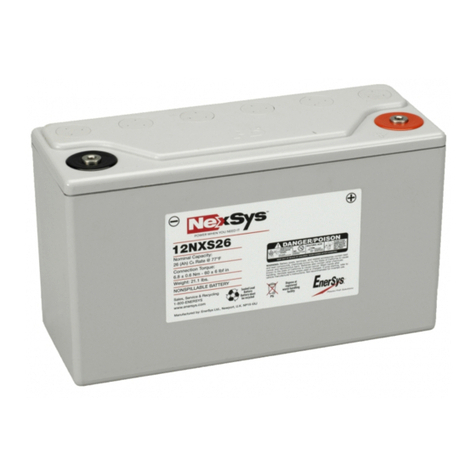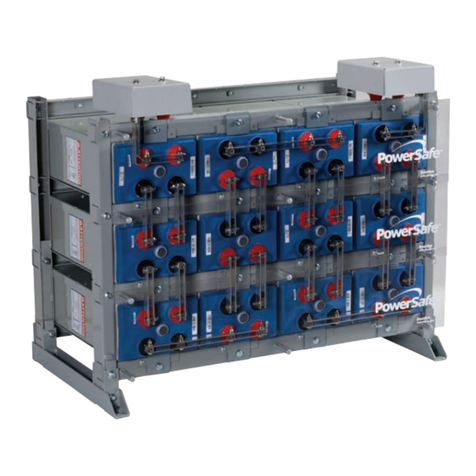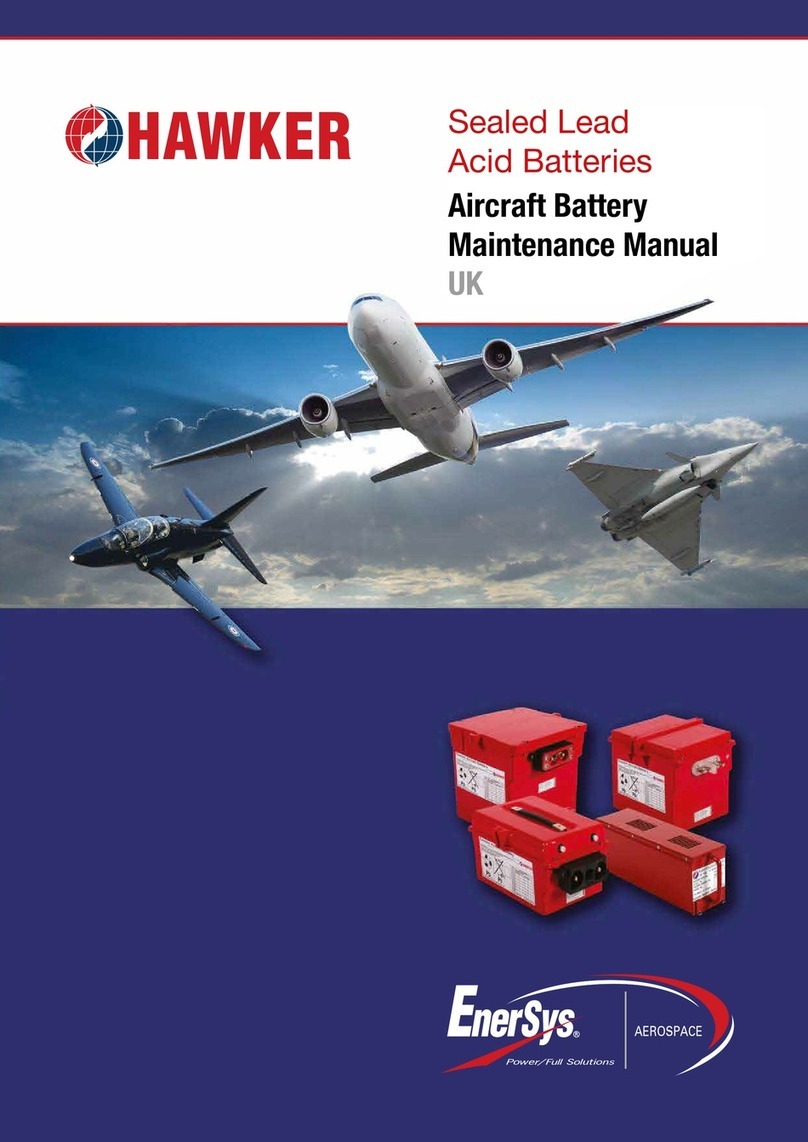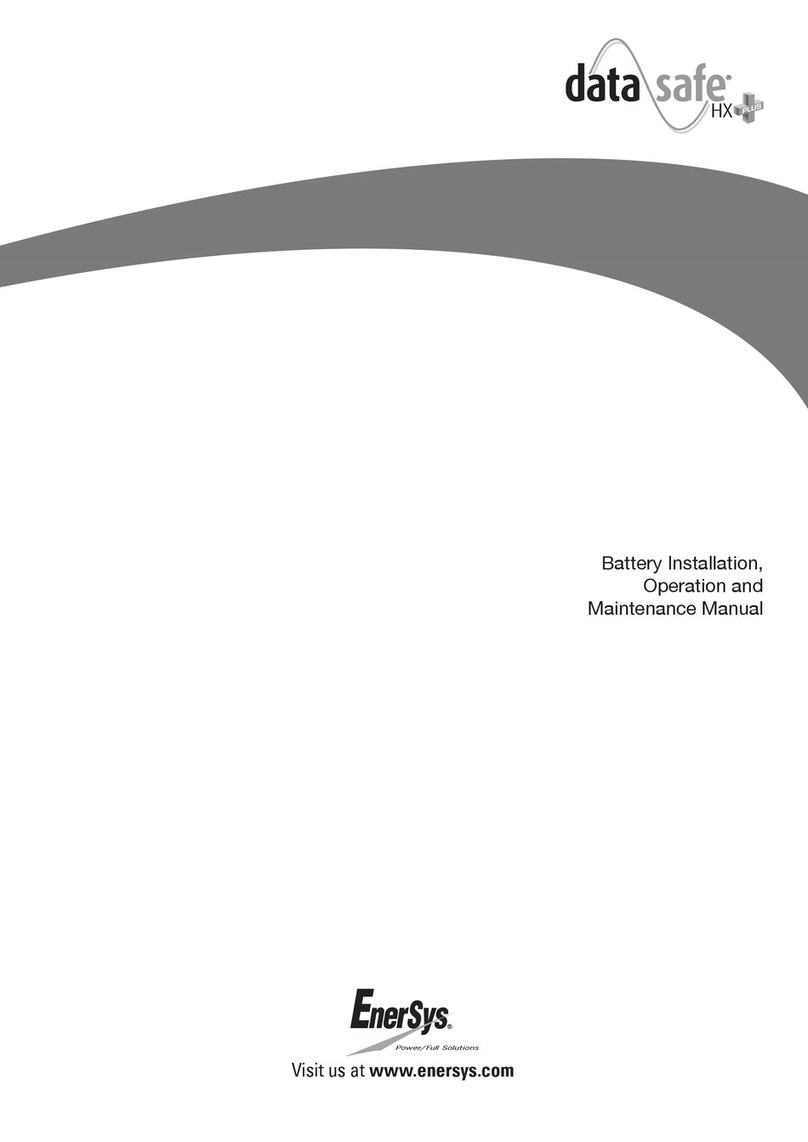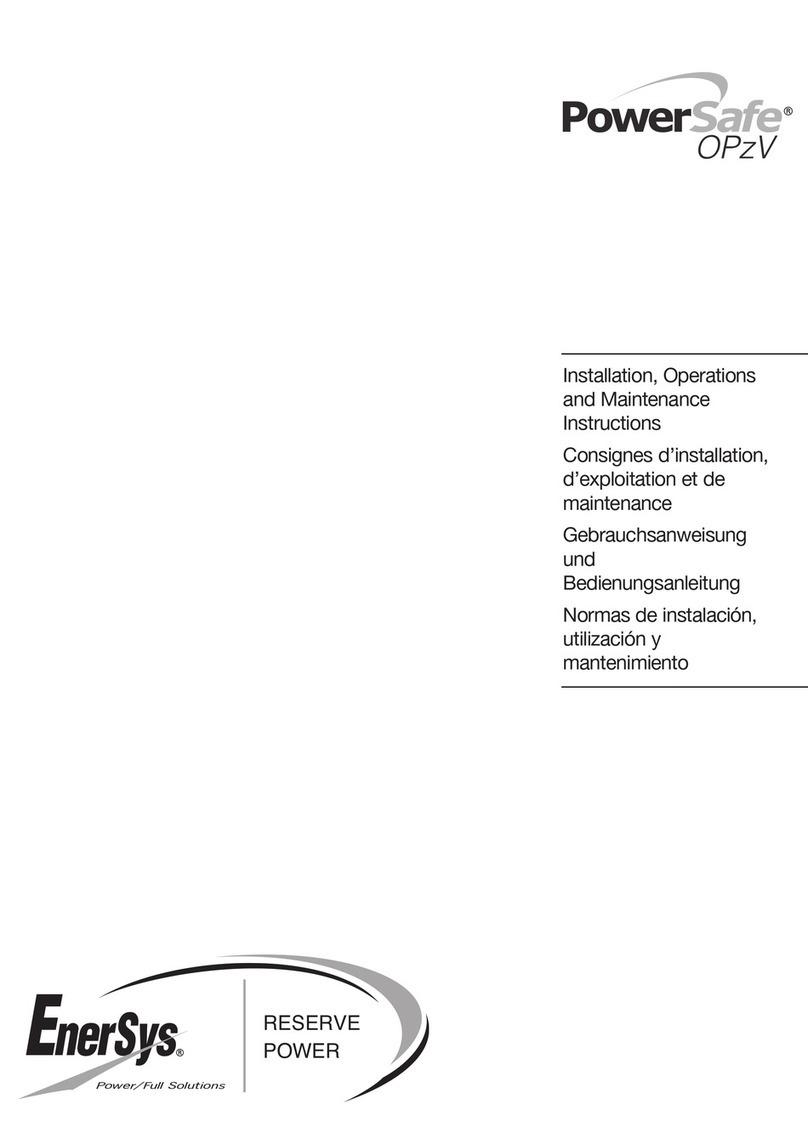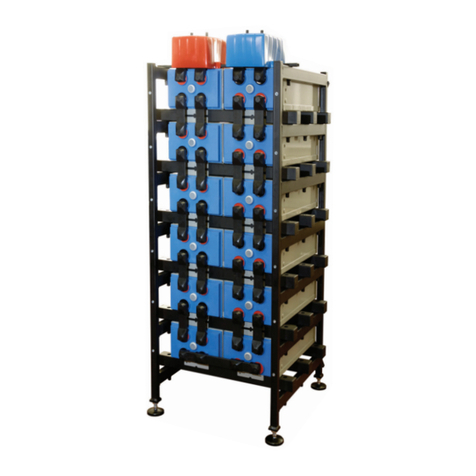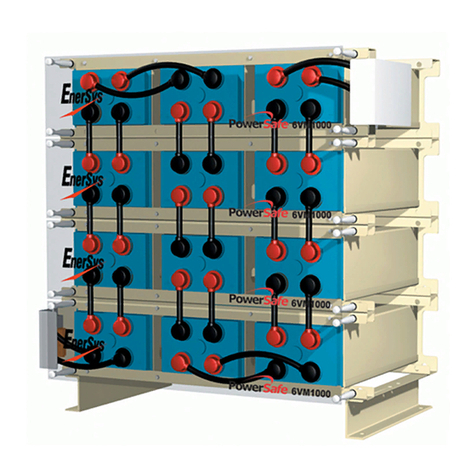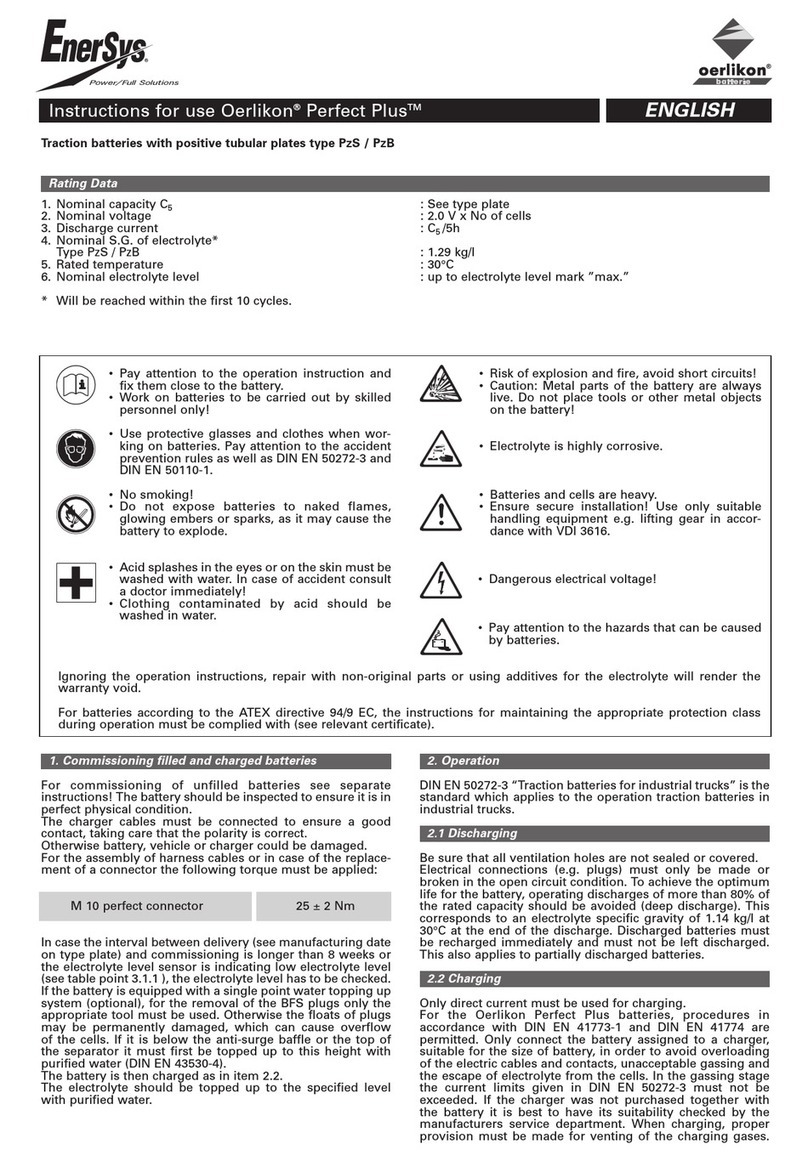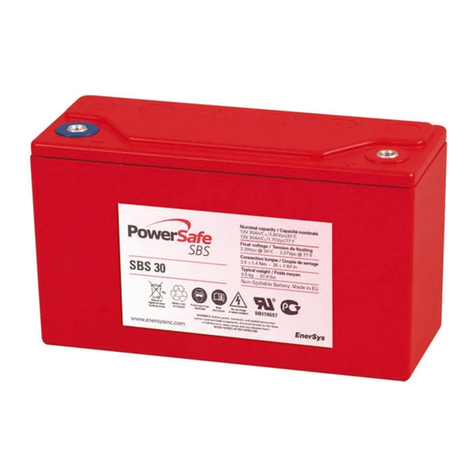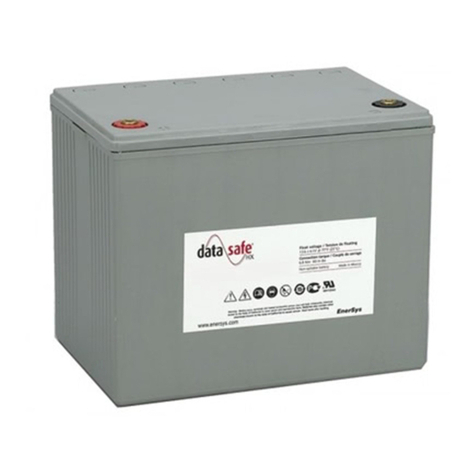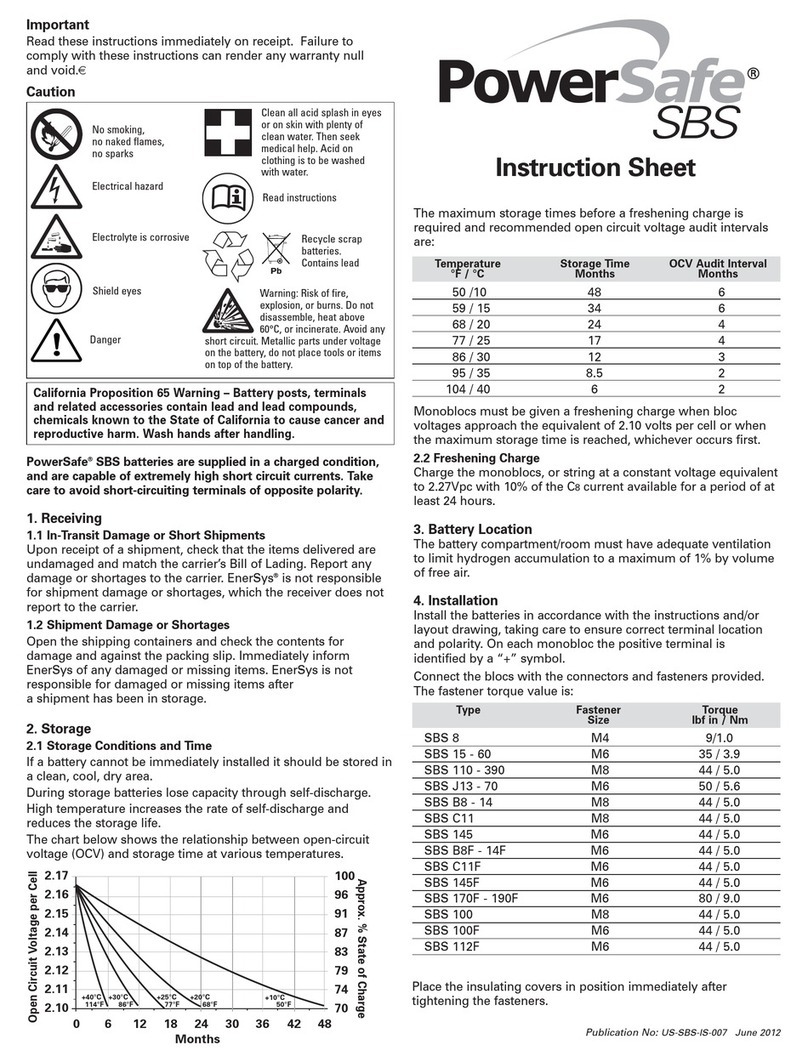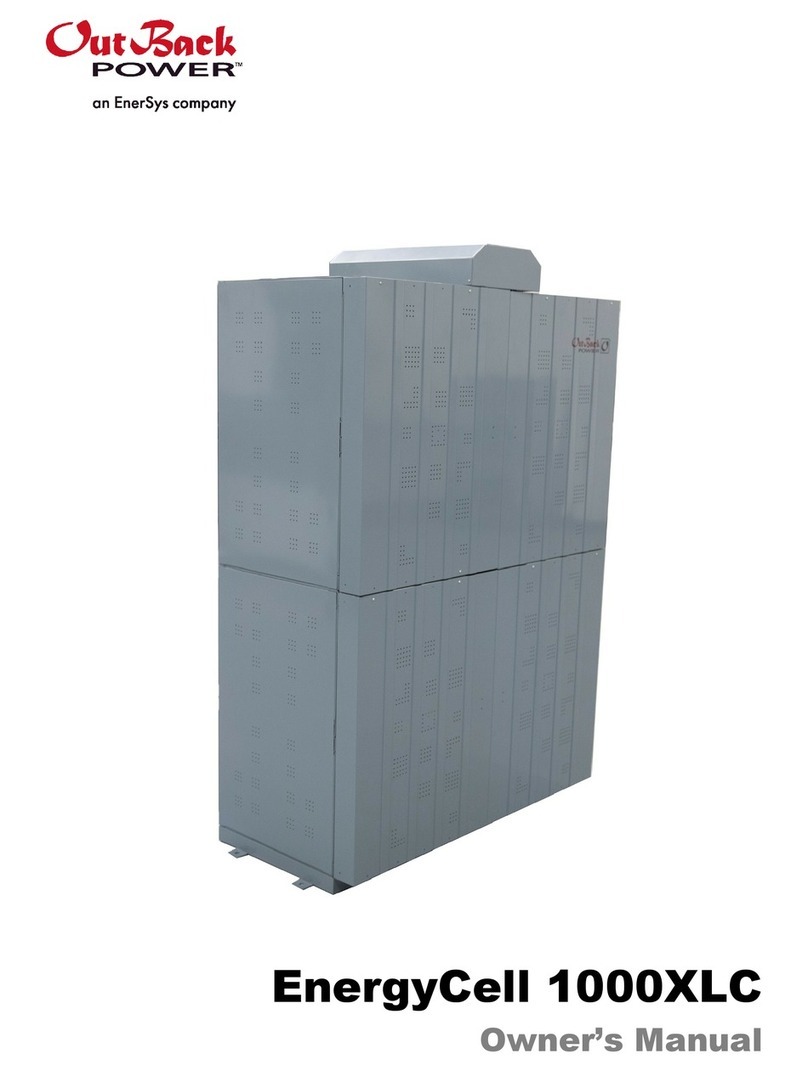manufacturer’s recommended discharge indicators
(imperative presence of a discharge limiter with an energy
cut-off at 1.83 vpc operating voltage at 80% DOD C5, when
the recharging time is 12 hours, and 1.87 vpc at 60 % DOD
C5 when the recharging time is 8 hours). Discharged
batteries must be recharged and never be left in a
discharged state for a long time.
Fiamm energy dry batteries can be used in normal duty
applications for a maximum 6 days per week.
Avoid applications where:
• no rest time is available allowing the battery to cool
• battery duty leads to a high increase of temperature
during operation.
2.2. Charging
A full charge shall be carried out every working day.
The charging time for a 80 % discharged battery shall be
12 hours, or 8 hours for a 60% discharged battery with the
appropriately assigned Fiamm Premium HF com/Premium
HF flex high frequency charger.
After any changing of cables on the charger, our technician
must visit the site to check the charger.
Fiamm energy dry batteries have a low gas emission.
Nevertheless, when charging, proper provision shall be
made for venting of the charging gases (EN 50272-3).
Battery container lids and the covers of battery
compartments shall be opened or removed. With the
charger switched off connect the battery, ensuring that the
polarity is correct. (Positive to positive, negative to
negative). Now switch on the charger.
2.3. Equalising charge
Equalising charges are used to optimise the life of the
battery and to maintain its capacity. A unique equalisation
charge is automatically carried out weekly 8 hours after the
end of the charge with a Fiamm Premium HF com/Premium
HF flex charger.
3. Battery life
The optimum lifetime of the battery depends on the
operating conditions (temperature and depth of discharge)
3.1. Temperature
The temperature range of use for the battery is between
+5 °C and + 35 °C. Any use outside of this range shall be
approved by a Fiamm service technician. Optimal battery
life is obtained for a battery temperature of 25-30 °C High
temperatures reduce battery life according to IEC 1431
technical report, lower temperatures reduce the capacity
available.
4. Maintenance
The electrolyte is immobilised in a gel.
The density of the electrolyte cannot be measured.
• Never refill with water!
• Never remove the safety valve from the cell
In case of accidental damage of the valve, contact our After
Sales Service for replacement.
The battery should always be kept clean and dry to prevent
current leakage. Any liquid in the battery tray shall be
extracted. Damage to the insulation of the tray should be
repaired after cleaning, to ensure a good insulation and to
prevent tray corrosion. If it is necessary to remove cells it is
best to call in our service department for this.
4.1. Daily
• Check that the plugs and sockets are in good condition.
4.2. Monthly / quarterly
• Carry out end of charge voltage readings at C5/100,
measure and record:
• the voltage of the battery
• the voltages of each cell
If significant changes from earlier measurements or
differences between the cells or bloc batteries are found,
please contact Fiamm Service.
• If the discharge time of the battery is not sufficient,
check:
• That the work required is compatible with the battery
capacity
• The settings of the charger
• The settings of the discharge limiter.
4.3. Annually or biannually
Internal dust removal from the charger.
Check with attention:
• the state of the plugs :be sure to have a good contact
between the plugs without trace of overheating.
• the state of the output cables.
If you check the torque loading, you shall use a torque
wrench with respect of recommended value : 25+/- 2 Nm.
In accordance with EN 1175-1 at least once per year, the
insulation resistance of the truck and the battery must be
checked by an electrical specialist.
The tests on the insulation resistance of the battery shall
be conducted in accordance with EN 1987 part 1.
The insulation resistance of the battery thus determined
must not be below a value of 50 Ωper Volt of nominal
voltage, in compliance with EN 50272-3. For batteries up
to 20 V nominal voltage the minimum value is 1000 Ω.
5. Storage
If batteries are taken out of service for a lengthy period they
should be stored, disconnected from the truck, in the fully
charged condition in a dry, frost-free room.
Batteries shall be recharged after a maximum storage time
of :
• 2 months at 30 °C
• 3 months at 20 °C
Effect a recharge before putting the battery into service. A
monthly refreshing charge is recommended. The storage
time should be taken into account when considering the life
of the battery. Never leave a battery connected to a truck for
a long time.
Storage at open circuit is not allowed when in discharged
state.
6. Malfunctions
If malfunctions are found on the battery or the charger our
service department should be called without delay. A
service contract with us makes it easier to detect and correct
faults in good time.
Back to the manufacturer!
Batteries with this sign must be recycled.
Batteries which are not returned for the recycling process must be disposed of as hazardous waste!

